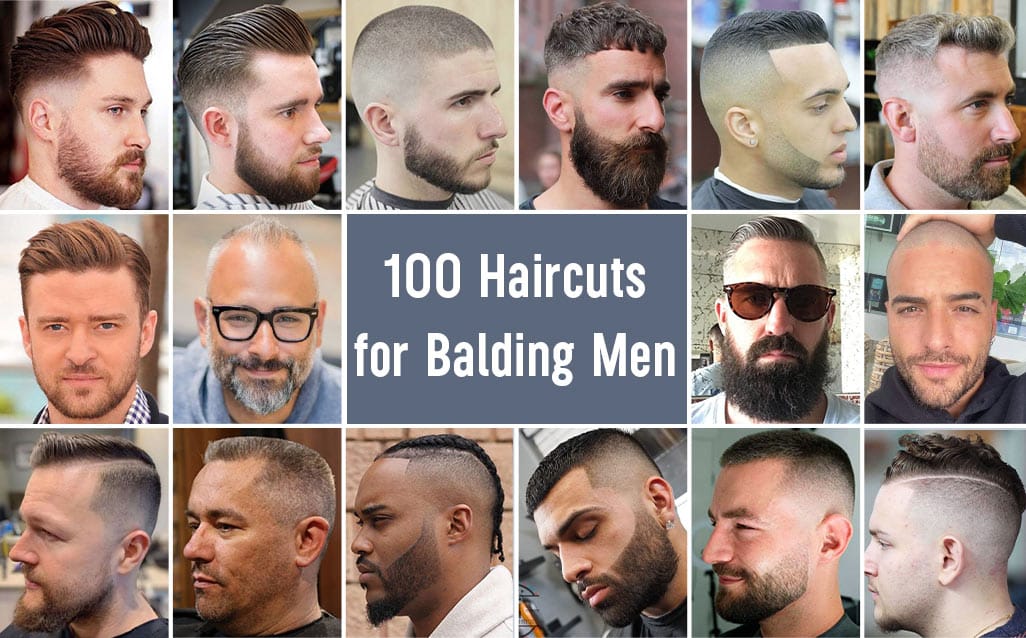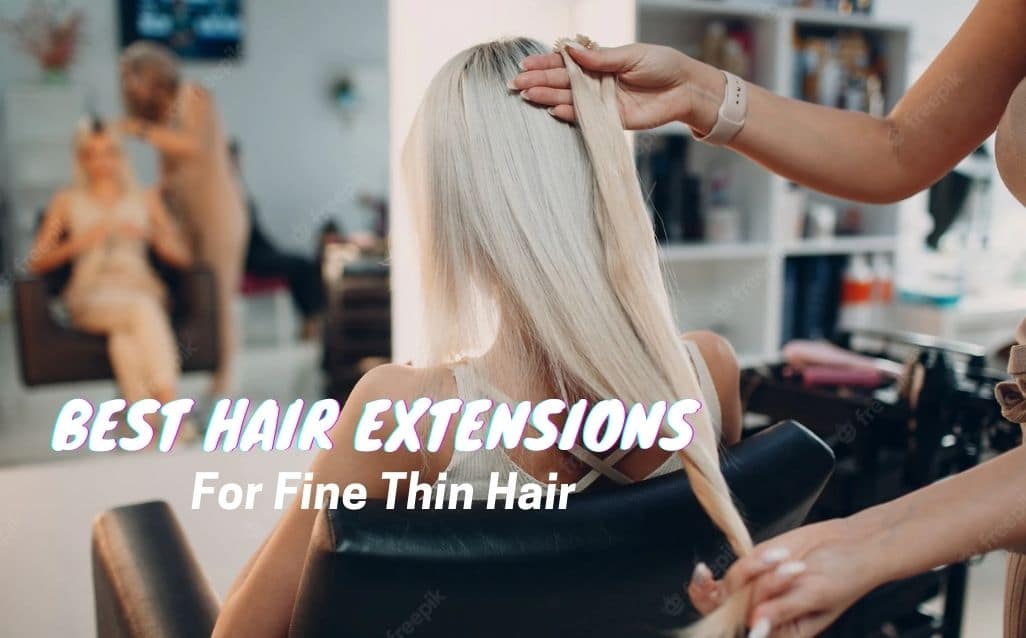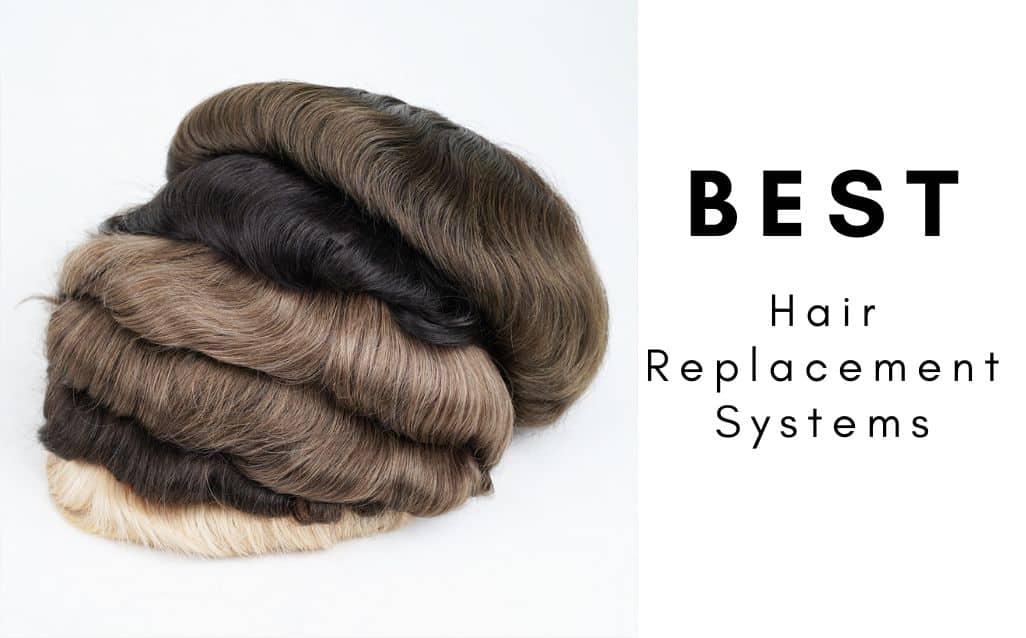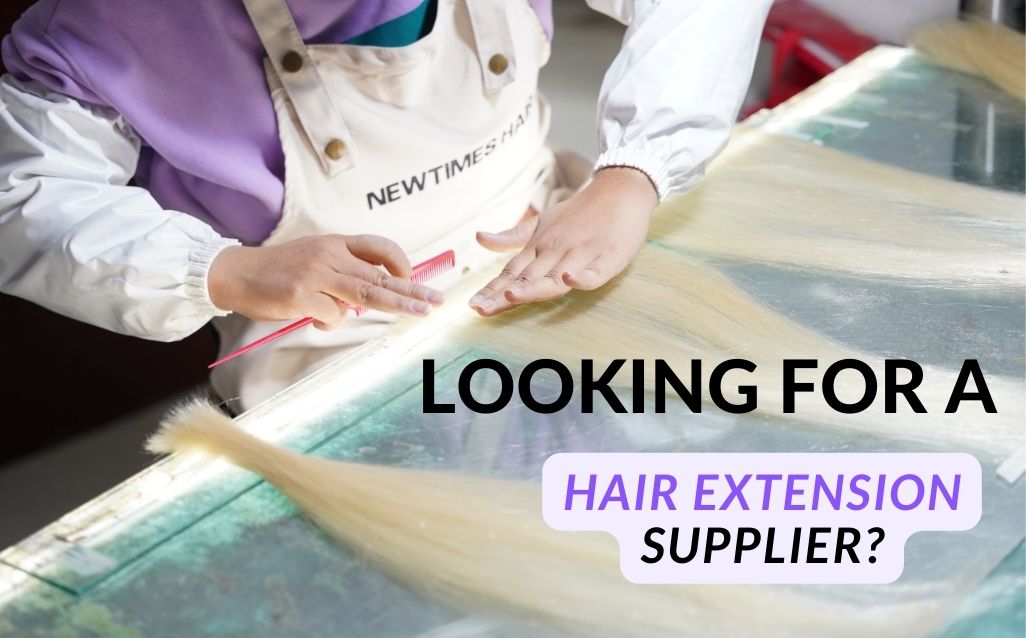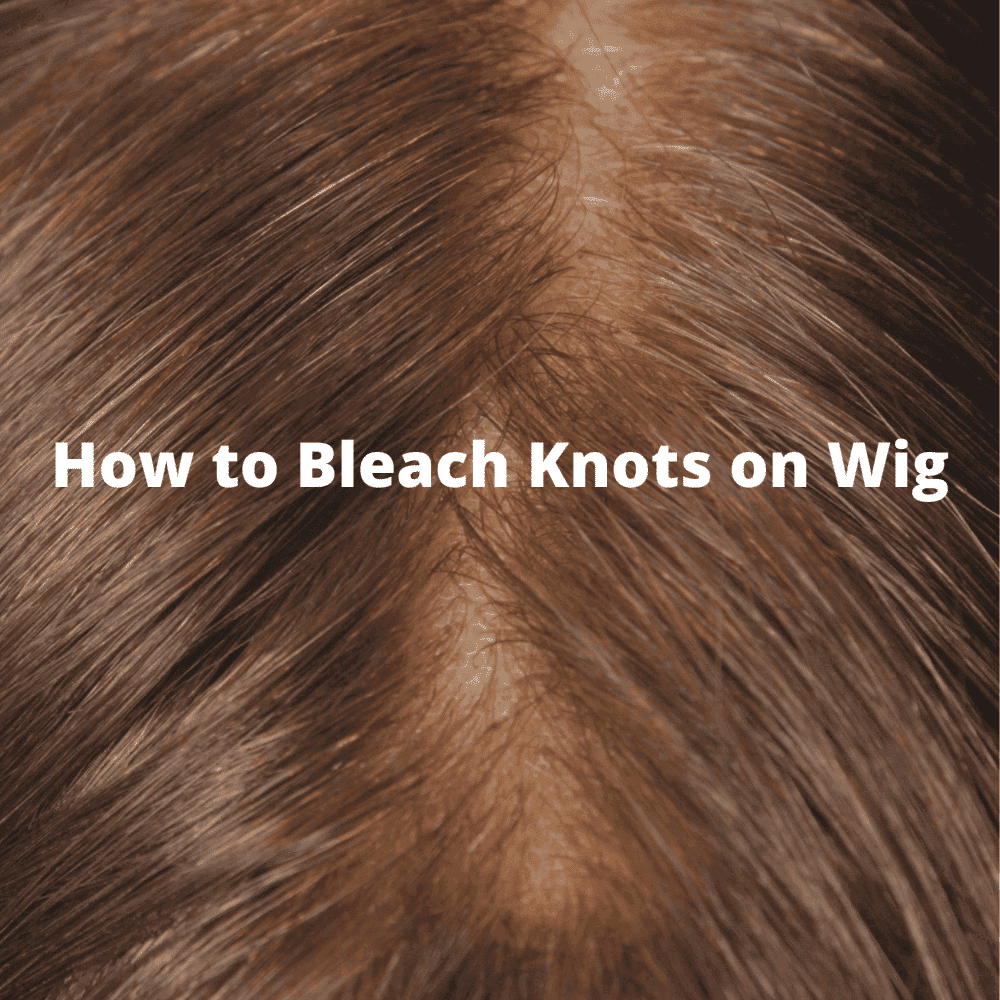All customers should want a hair system with a natural front effect.
That is why we have put together this collection of techniques that we can do to help create a natural effect for the front hairline of a realistic modern hair system.
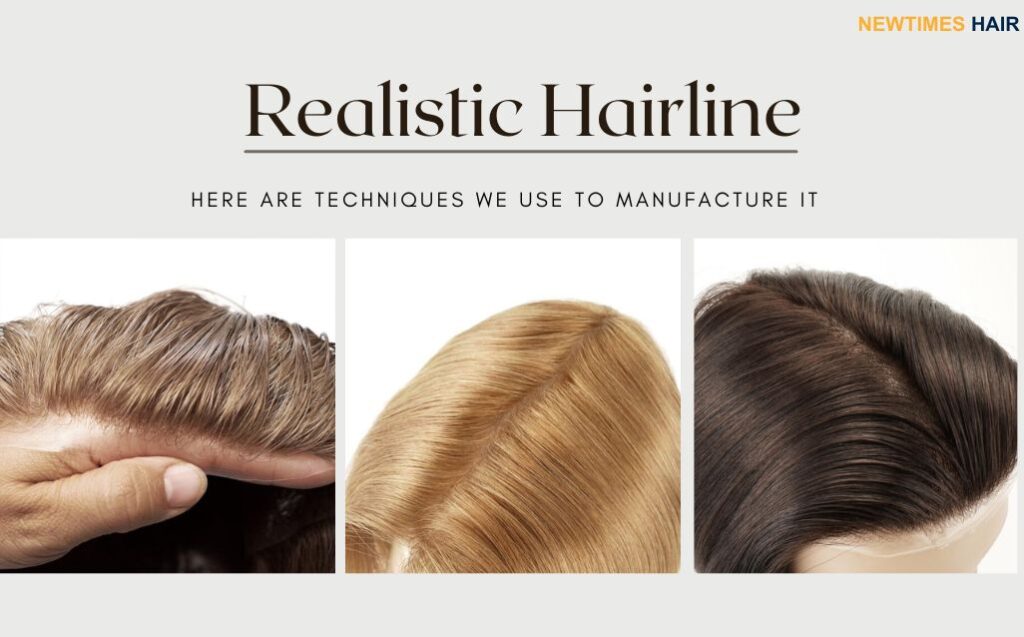
Bleached knots
After the hair system has been made, we can use bleaching powder to lighten the color of the hair root to make the root and the knot virtually undetectable.
Our current bleaching techniques allow us to bleach the hair roots to a very natural light color without causing so much damage to the root and to confine the bleaching to as small an area as possible.
Overall, it creates a very natural look. Bleaching will still shorten the lifespan of the hair though for those customers whose sole priority is a natural effect, this is a sacrifice they are prepared to make.
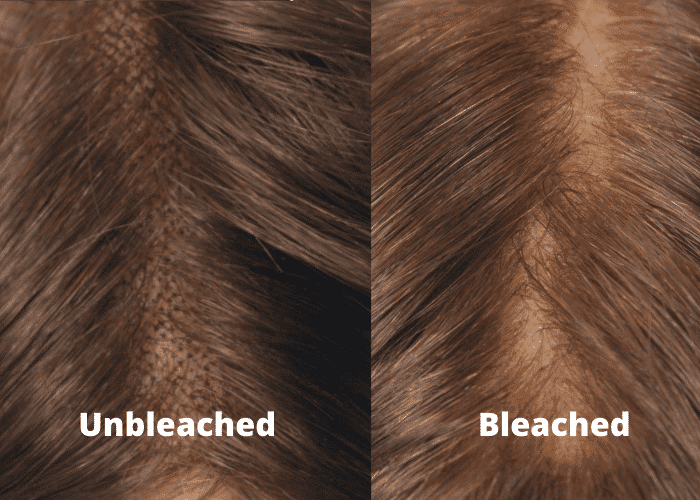
However, not all hair replacement systems can have bleached knots.
We usually just bleach knots on French lace or Swiss lace.
French lace is a popular choice because it is both natural and durable.
The biggest hair density for French lace is medium-heavy.
Swiss lace, on the other hand, is softer and less detectable than French lace.
It is very thin and delicate and so its lifespan is normally only around one month.
The biggest density for Swiss lace is medium-light. So, despite its short lifespan, Swiss lace is for those clients whose number one priority is realism.
In terms of bleaching knots, it is easier to bleach light-colored hair.
The lighter the hair color, the better the bleaching effect.
Colors darker than #1B is too dark to bleach knots so for these colors we need to use another technique: dye-after.
Dye-after treatment
Dye-after treatment is an alternative technique for bleaching knots when the hair color is darker than #1B.
As we mentioned above, when the hair color is darker than #1B, it is very hard to lighten the hair root color again with bleach powder. The dye-after treatment technique is as follows:
First, we can either use light-colored hair to make the hairpiece or as is more common, just use light hair for the first 1″ of the front hairline area.
Once the hair system is finished, we will dye the light-colored hair to a dark color to match the clients’ color sample or the required color number.
Now when we dye the light-colored hair, we will not dye the hair root. Instead, we will leave the hair root as it is which will, in turn, create the same effect as bleaching the knots would create.
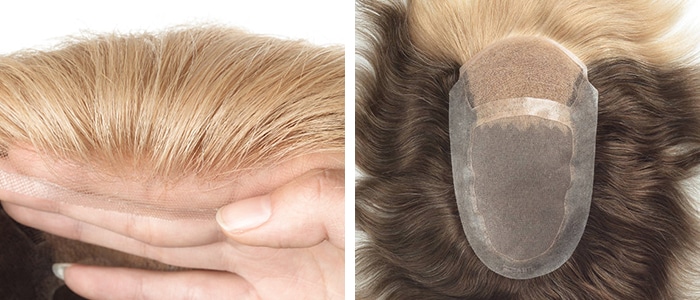
Being a hair system factory, we produce hair systems in bulk at wholesale price, so we don’t have a way to do dyeing work as delicate as some salons might be able to do. So for factories, dye-after treatment is just available for colors that are darker than #1B.
We also don’t suggest doing dye-after to the whole piece because there is a chance you might dye the rest of the base.
Many of our salon owners or wholesalers will simply ask us to use a light color to make the front hairline and then they will do dye-after in their own salon or they will sell it as it is to salons.
The salons can then charge a dye-after service fee and do delicate dyeing work with coloring products specifically designed for salons that cause less harm to hair.
A suitable front contour
Choosing an appropriate front contour helps to create a natural front effect too.
Different people have different front contours. Some people have sharp front contours, some have flat ones whereas other people have irregular ones.
So, you need to ask just fitting contour for your clients then the hair system can give them a perfect frontal hairline. We have several common front contours: A, AA, B, BB, C and CC.
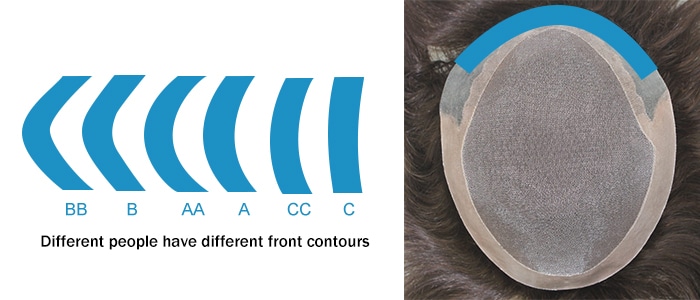
C or CC contours are relatively flat and these two front contours fit most women. If a female customer has no specific requirements then we will make a CC contour.
B or BB are both sharper than A and AA and customers should choose what best suits them.
We also have a standard front contour that is between A and CC. This is our default option for men’s hair replacements.
Women, however, tend to have a rounder and flatter front contour so you need to be aware of this as our standard front contours will not be suitable for women.
The contour will be too sharp. It’s best if you make templates for your clients then we can make the contour according to your template.
A suitable knotting method
Choosing a suitable knotting method is very important for creating a natural front too.
For skin base hairpieces, you can choose V-looped hair on the front instead of knotted hair.
V-looped hair is one of the more popular knotless ventilation techniques as it creates a knotless and invisible natural front hairline.
If you want to know more about this ventilation technique, you can go to the relative pages on our website.
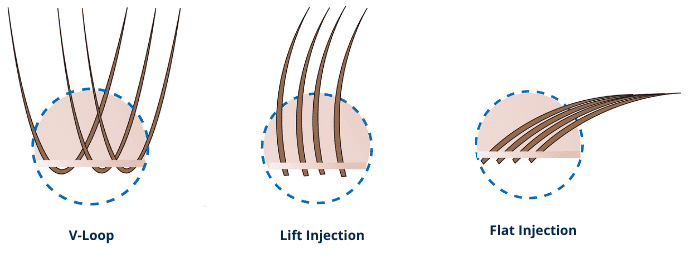
Knotted hair is a possibility and single flat knots and single split knots are two different kinds of small and invisible knots.
Both types of knots are very small and when just one strand of hair is used per knot, they appear very natural. That is why they are often used at the front to create a natural frontal hairline. Moreover, because the hair knots are much smaller than double split knots and double reverse knots, you can get a much better bleaching effect with single flat knots and single split knots.
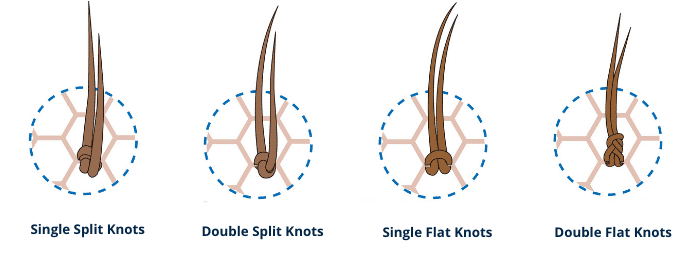
Another characteristic of single flat knots that helps create a realistic front appearance is that on lace bases, the hair direction of single flat knots can be changed very easily and freely.
Therefore, when we do a few lines of single flat knots at the very front it can give good support to the hair just behind this area. This means the wearer can easily have a slightly ‘up and backwards’ hairstyle at the front which is a very popular look at the moment.
However, even though single flat knots are as small as single split knots, the hair lies flatter and it does not have a natural bounce effect to it. Furthermore, the knots are not as strong as single split knots so single split knots are more widely used than single flat knots because of the natural bounce and lift they have.
Underhair
Underhair is knotted on one or two lines of the edge of the scalp side of the base.
When the skin base is thick, the edge is sometimes visible and underhair is used to cover the edge and create a more natural look. Underhair can also be added to a folded net front to decrease its visibility.
If the skin base is thin i.e. between 0.03 and 0.08mm then we normally do a graduated hairline instead of underhair to create the type of natural look that a customer wants.
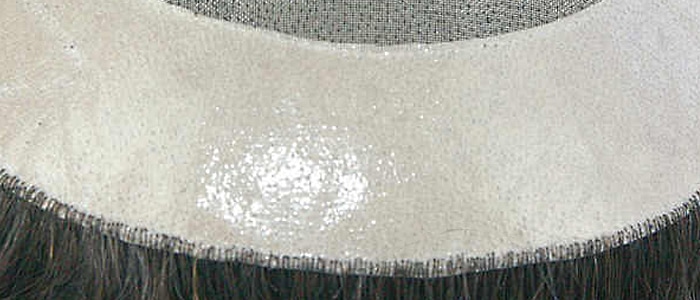
Underhair is not suitable for lace bases because the material is already thin and transparent and underhair actually detracts from the overall look.
With lace systems, we use a graduated front hairline which enhances the natural look because it mimics the pattern of a naturally growing hairline.
Graduated density
A graduated density also helps to create a natural-looking front hairline for a hair system. We tend to use a graduated density at the front to create this look.
A graduated hair density means less density and an irregular front line which then graduates through to the main density of the hairpiece.
This method also avoids a very neat and straight front line. The overall effect is a more natural front hairline that mimics our natural hair pattern. However, if your client needs thick hair at the front then we will not use the graduation method.
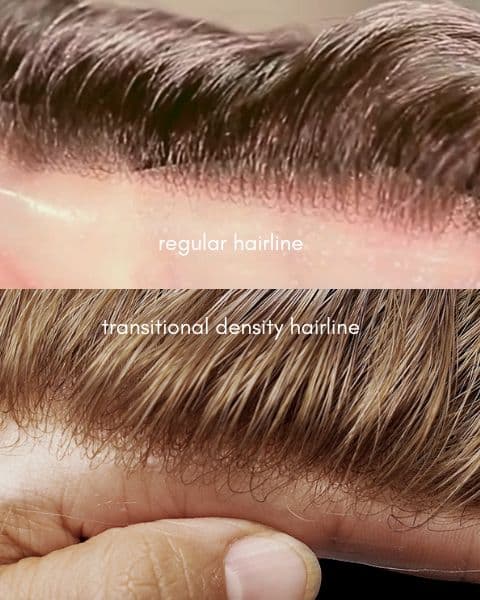
Scallops
When a hairpiece has a lace or skin front, some customers ask for scallops at the front as they make the base front edge irregular instead of a very straight line.
That helps to create a more natural front hairline effect. However, we do not use a graduated hair density if there are scallops as that is a different way of achieving a natural front hairline and the two techniques cannot be applied together.

Final Words
We hope you now have a better option of all the different ways there are to enhance the front effect of a hair system.
If you have any questions about anything we touched upon then please contact: info@newtimeshair.com.
